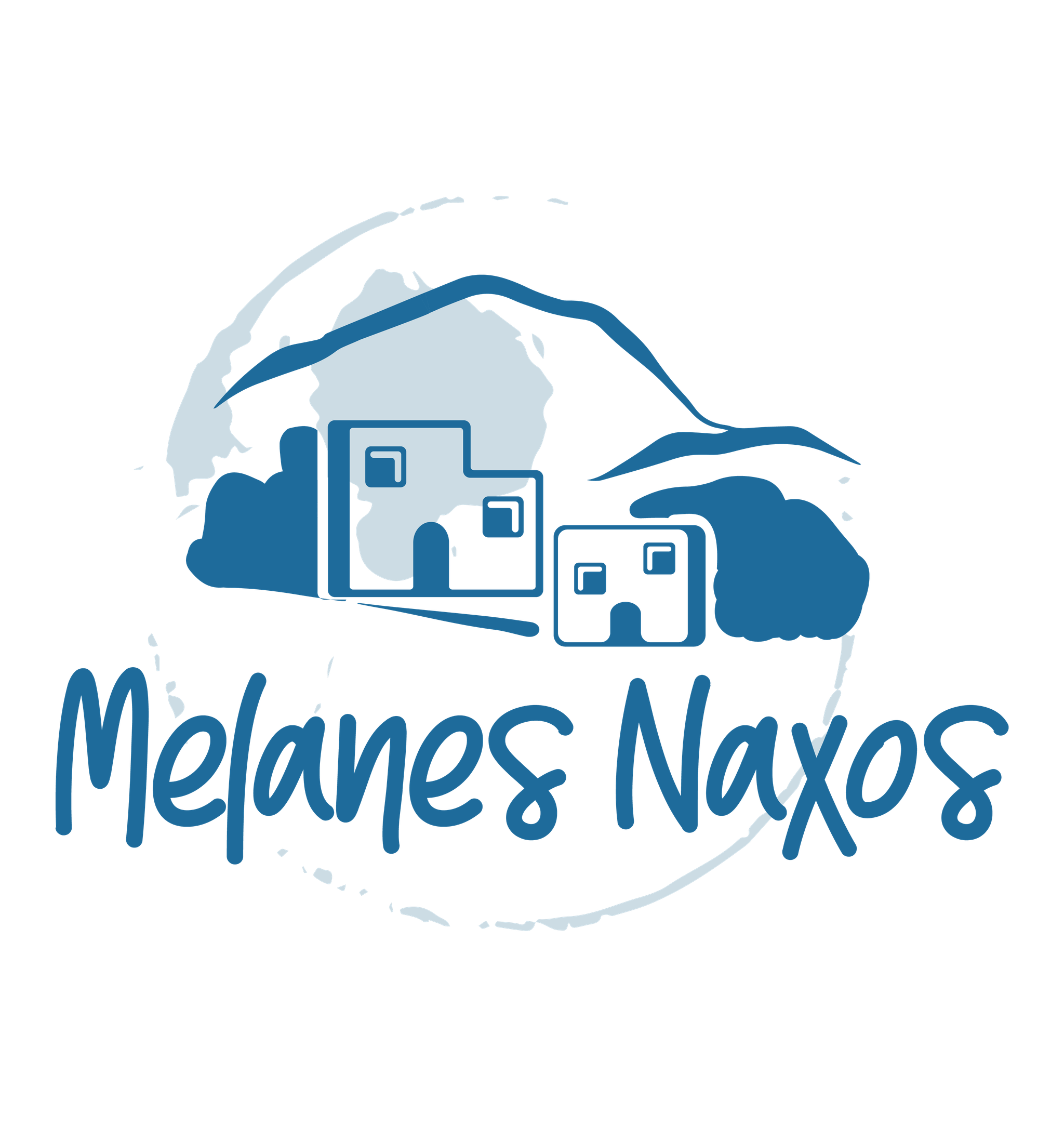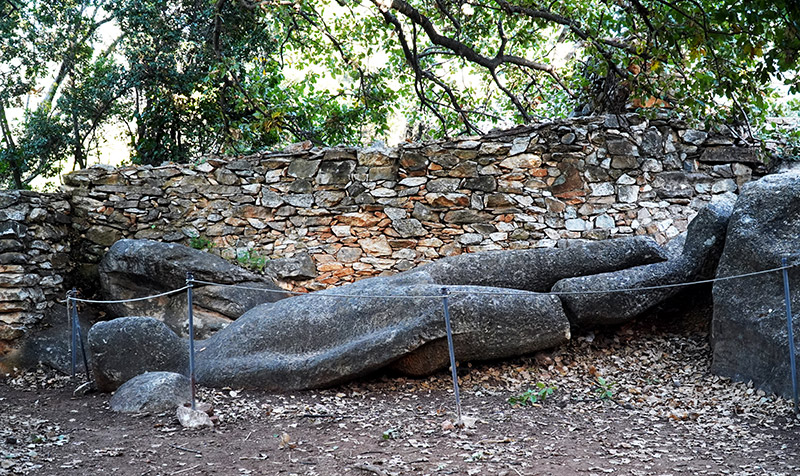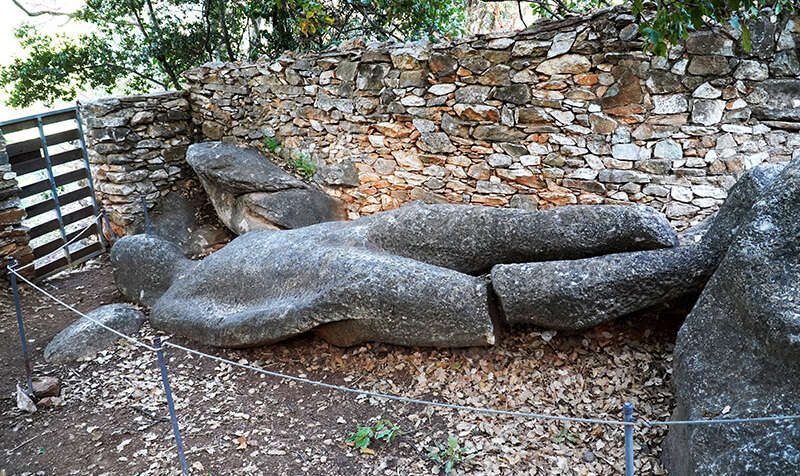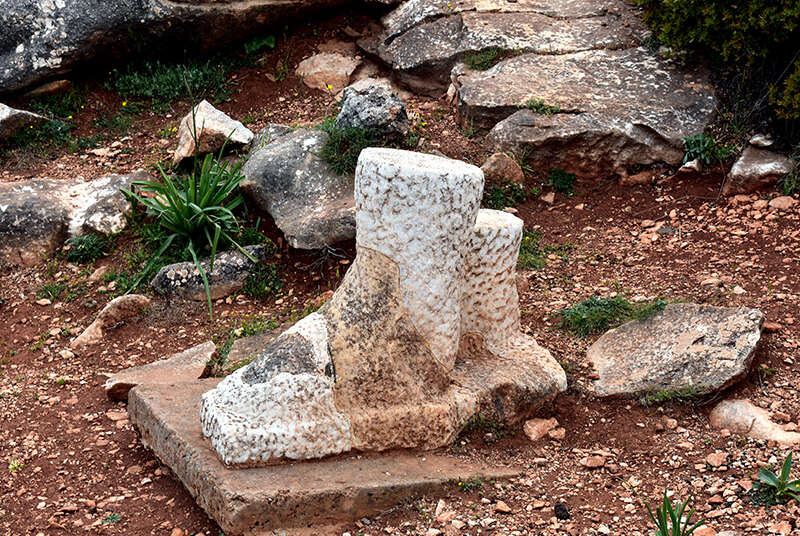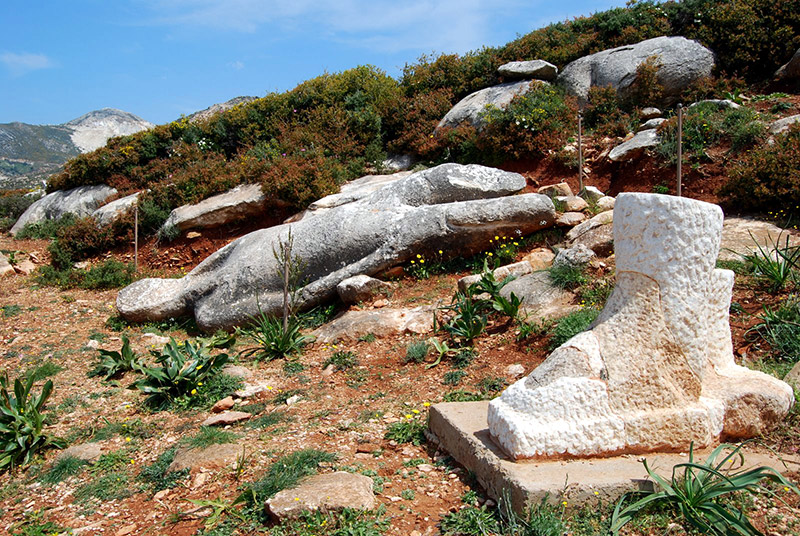Kouroi - Ancient Quarries
Kouros of Flerio (Melanes area)
The kouros in the location of Flerio, was found in a narrow private orchard. The kouros is 5.5 m in size, while its right leg is broken. This fracture occurred during transport. The statue of Flerio was carved in the first half of 6th BC. Facial characteristics can slightly be observed. The body shape is carved in an advanced stage.
Kouros of Faragi (Melanes area)
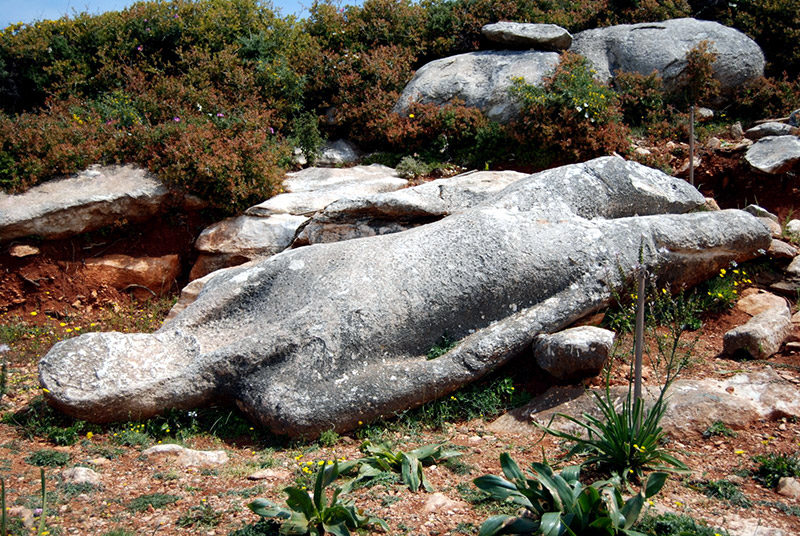 The second statue, the kouros in Faragi, is located south of Flerio at a higher altitude, accessible via small paths. The statue has remained on the ground since its construction (first half of 6th century BC) and depicts a naked man. The statue is preserved from the head to the knee on the right side, while the left leg is missing. The hair fell right and left from the head to the chest, while the face has been completely removed. Although the statue is incomplete, its creator has already given it the general characteristics of Naxian style, the delicate proportions, and the flowing outline. The surviving length of the kouros is 3.83 m. And its total height would reach 5.50 m.
The second statue, the kouros in Faragi, is located south of Flerio at a higher altitude, accessible via small paths. The statue has remained on the ground since its construction (first half of 6th century BC) and depicts a naked man. The statue is preserved from the head to the knee on the right side, while the left leg is missing. The hair fell right and left from the head to the chest, while the face has been completely removed. Although the statue is incomplete, its creator has already given it the general characteristics of Naxian style, the delicate proportions, and the flowing outline. The surviving length of the kouros is 3.83 m. And its total height would reach 5.50 m.
The most probable reason why the statues were abandoned in the quarries is presumed to be accidents that occurred either during the quarrying or during their movement for the purpose of their delivery. In the area of the quarries, there are also large volumes of marble, semi-finished, as well as traces of ancient tools.
Text V. Anevlavi (Archaeologist), Em. Anevlavis (Museologist)
Ancient Marble Quarries
Undeniable witnesses of the intense exploitation of marble in Naxos during the 7th and 6th BC. and the decisive contribution of the Naxian marble artists in the creation of the great Greek architecture and sculpture art are the dense traces and remnants of ancient quarrying, which have been preserved in the extensive marble mountain range between Ano Potamia and Flerio of Melanes. This early exploitation of marble in Naxos was done from the surface of the deposits, with an excellent experience of the craftsmen in recognizing the solid volumes that were necessary for the dimensions of their works. In this mountainous landscape, the traveller encounters innumerable testimonies of the ancient quarry activity, grooves opened in the rock that defined from the surface the volume that was to be extracted, rows of holes for the wedges with which these volumes were detached, sometimes horizontal beds, which remained after the extraction of large rectangular volumes, or even deep vertical fronts in places where the solid rock allowed deeper extraction. On the surfaces of the marble on the ground, there are roughly shaped volumes in various shapes, the detachment of which was not completed, as well as roughly processed works. A particularly impressive, truly megalithic such work, which shows the special knowledge, is the 7.5 meter and 25-ton weight beam, which was intended for the lintel of a door slightly larger than the "Portara", which remained high in the quarries during transport to its destination for unknown reasons. It should be noted here that three other half-finished statues come from the same quarries, two in the museum of Naxos and one in the National Archaeological Museum of Athens. However, the exact location where they were abandoned in the quarries is not known. Archaeological research has found that in these quarries in the area of Melanes-Potamia not only began the systematic exploitation of marble for the production of large works of art, but also took the pioneering steps for the development of great architecture and sculpture.
Source Text: "Preservation and promotion of the ancient aqueduct of Melanos Naxos, an ancient sanctuary at the springs of Melanes and statues in the ancient quarries of the area". Athens 2010.
